Time for Team USA to Panic at FINA World Championships?
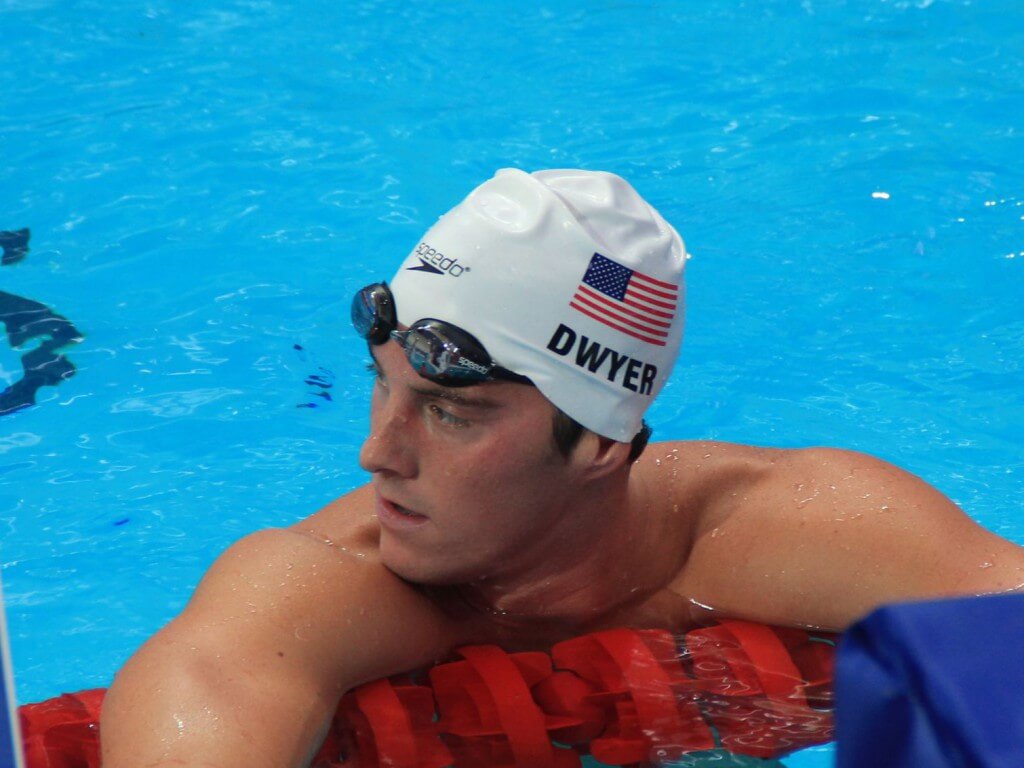
Coverage of the 2015 FINA World Championships is sponsored by Wylas Timing. Visit our coverage page for more.
By David Rieder
Day one of the 16th FINA World Championships featured four gold medals, three of them going to the same swimmer or relay team that won the event in Barcelona two years ago. Katie Ledecky and Sun Yang each defended their gold medals in the 400 free, while France defended their title in the men’s 400 free relay. The women’s 400 free relay title turned over, but no one can call the Australian victory a surprise after they set a world record in the event at the Commonwealth Games last year.
On a day when seemingly so little deviated from the pre-written script, everyone wants to know what’s wrong with the American team. Aside from Ledecky’s dominant win in the 400 free, the traditional swimming powerhouse had few standout swims. Connor Jaeger did post a strong fourth-place finish in the 400 free, while the American women salvaged a bronze in the 400 free relay. But panic has set in as four of the meet’s first eight finals will have featured no American participants.
Substandard efforts from Jimmy Feigen and Anthony Ervin knocked the U.S. out of the final of the men’s 400 free relay − an event in which they would have been challenged to medal in the first place − while no American swimmer made the top eight in three of the four semi-finals contested today, leaving the U.S. just two swimmers competing in Monday’s finals (both in the women’s 200 IM).
But should that really be so surprising, considering the events contested? The men’s 50 fly featured one U.S. entrant, Tim Phillips, who didn’t even advance to the semi-finals, while the top 100 flyer in America last year, Tom Shields, declined his option to swim the event. The women’s 100 fly has been one of the weakest events in the United States over the past two years, and Kendyl Stewart swam just two tenths of a second slower than her lifetime best from last summer in finishing tenth.
Cody Miller just missed out on the final in the men’s 100 breast, swimming a 59.86 to finish ninth. He has already been a bit faster this season, with a 59.51 to his credit from the Arena Pro Swim Series stop in Santa Clara in June, so in terms of semi-final misses, that should be the only truly disappointing effort from a U.S. perspective.
The relays were not pretty, to be sure. The men’s failure to final marked the first time the Americans have ever missed out on the top heat in that race, while the women’s team featured disappointing splits all around. Margo Geer split 54.14, far off of the 53.37 she swam in prelims, while Simone Manuel dove in ahead of Dutch anchor Femke Heemskerk and surrendered more than a second to the Netherlands on that leg; Heemskerk out-split Manuel, 51.99 to 53.09.
But despite all of those initial disappointing swims, no reason to panic − yet. Day one is complete, but seven more days remain of the World Championships. Sure, the Americans’ medal count will suffer early on, but that has been a noticeable pattern throughout previous World Championships. Events such as the 200 free and 100 back, which begin tomorrow, have long been strengths for the U.S. Give the team the benefit of a few days before judging the entire meet as a failure.
Sjostrom Shines With World Record
Six years after first setting the world record in the 100 fly as a 15 year old at the Rome World Championships, Sarah Sjostrom reclaimed the honor of holding the fastest time ever in the event in today’s semi-finals. She clocked a 55.74 to lower Dana Vollmer‘s previous record of 55.98 set on her way to Olympic gold two years ago. And Sjostrom will enter the final as the overwhelming favorite for the gold medal.
Just one year ago, Jeanette Ottesen actually beat Sjostrom at the European Championships in the 100 fly, taking the touch by just one one-hundredth of a second, 56.51 to 56.52. This time around, Ottesen qualified second in today’s semi-finals, a whopping 1.3 seconds behind her Swedish rival. And as good as Sjostrom has become in the 100 fly, her versatility puts her in the conversation for best swimmer in the world today.
During the 400 free relay final, Sjostrom split a 52.38 that actually put Sweden in second place headed into the anchor leg (they ended up finishing fourth). Sjostrom will compete for top honors later this week in the 100 free, as well as the 50 fly and 50 free. She won’t even compete this week in the 200 free, an event in which she could possibly challenge for gold. Sjostrom’s all-around brilliance has put her on the same level as the likes of Katinka Hosszu, Katie Ledecky, and Missy Franklin.
Sharon Van Rouwendaal Continues Enormous Week
Entering the final of the women’s 400 free, only one of the competitors had already earned the title of 2016 Olympian. That would be the Netherlands’ Sharon Van Rouwendaal, who last week won the silver medal in the open water 10k in Kazan, earning her an automatic bid for next summer’s Olympics, along with a silver medal from the open water team pursuit race.
Van Rouwendaal entered the 400 free final having already won one World Championships medal in the pool in her career, a bronze in the 200 back in 2011, and she added a second today with a 4:03.02 in the 400, almost four seconds behind Katie Ledecky but the best of the rest by three tenths of a second.
And Van Rouwendaal’s quest for hardware does not end there. She will swim in the 1500 free beginning on Monday and in the 800 free on Friday. Few have challenged Ledecky in either of these events over the past several years, but Van Rouwendaal has set herself up as, at the very least, a medal favorite. And if Ledecky does prove vulnerable − she has the 1500 final mere minutes after the 200 free semis − Van Rouwendaal has some good momentum and no pressure on her shoulders with three medals already in her suitcase.
Quick Hits
*Katinka Hosszu swam a simply ridiculous 2:06.84 in the 200 IM semi-finals today − already more than a second faster than her winning time in the event from Worlds in 2013! She is now within seven tenths of one of the most incredible world records set during the suit era, Ariana Kukors‘ 2:06.15. But Hosszu could have a strategic decision to make on Monday, as the semi-finals of the 100 back take place just before the 200 IM final.
*Check out the start list for the men’s 100 breast final. Five of the eight qualifiers were born in the 1994 or later, including top seed and world record-holder Adam Peaty. For the first time ever, the majority of swimmers in a men’s World Championship final were born in the 1990s. The race for the gold could be a battle between young and old, with Peaty going up against the Olympic gold medalist in the event, Cameron van der Burgh (born in 1988).
*Speaking of veterans still doing their thing, how about Filippo Magnini? The 1982-born Italian finished fourth in the Olympic final of the 100 free all the way back in Athens in 2004, and he won World titles in the event in 2005 and 2007, sharing the later with Canada’s Brent Hayden. He’s had limited individual success since then, but he added his fourth-career World Championships medal to his trophy case today with a bronze on the 400 free relay. With a split of 47.55, Magnini has refused to let Father Time become a hinderance.




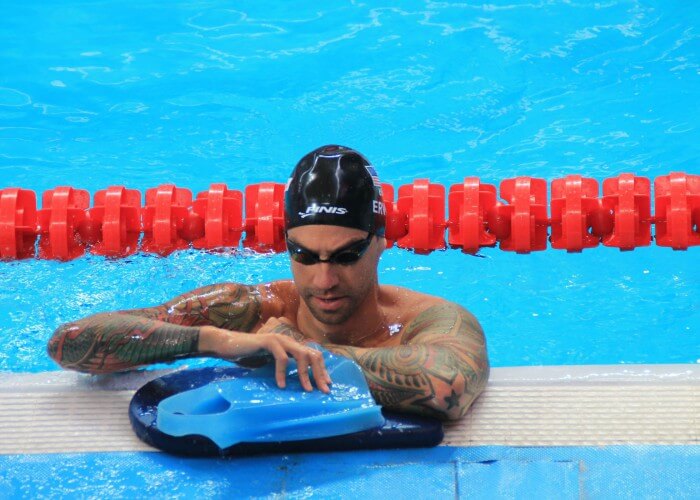
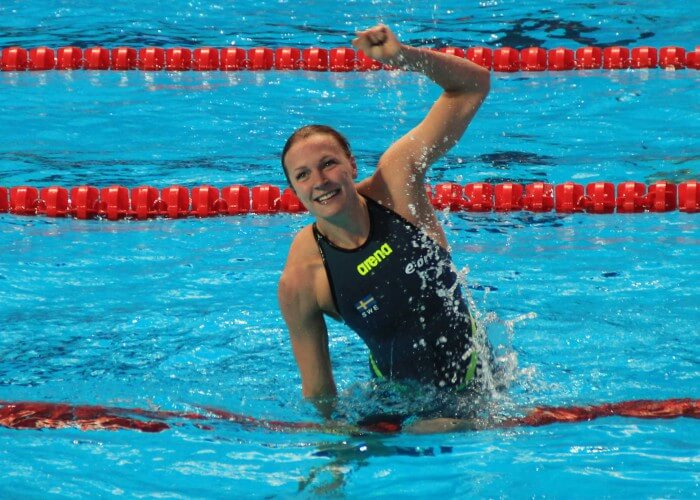
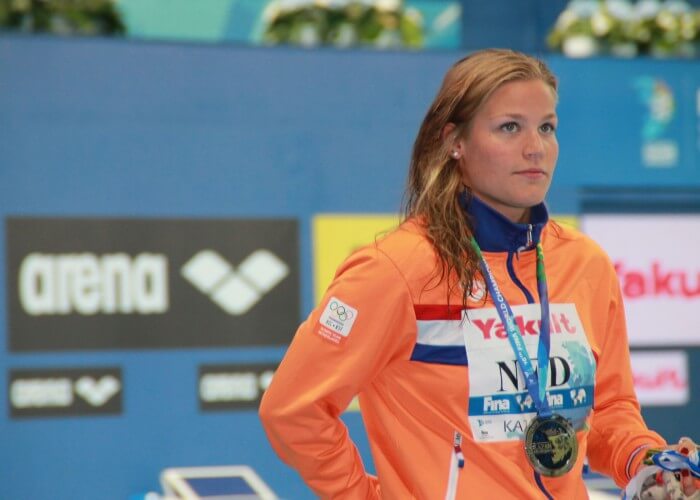
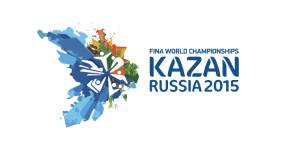
The USA has sold out to training, coaching, educating, and promoting foreign expatriates, university students, and swimming teams loaded with international athletes the past thirty years…and other countries have improved to the point of beating the crap out of American athletes. It’s no surprise that France, Australia, Brazil, the UK, Sweden, China, Japan, South Africa, Russia, and even Poland made the 400 Meter Free Relay Final…their athletes are allowed on athletic scholarships to train in the USA and you rarely see it the other way with an American citizen training in their country!! USA sold out to FINA….
Australia?
Dude, that one word destroyed every ounce of argument you had.
Old argument… the vast majority of the people on the podium are foreigners NOT training in the US.
Amazing … ten countries made an eight team final.
… So you have a handful of talented international athletes on university campuses.. So what … Like you said ; it’d been like that for the past 30 years … And dont get me wrong, it’s a good point , but it’s still not an excuse for a performance like that from the American team . For the U.S team to be absent from the 4×100 free relay final ?!?!? No way dude ! The only thing to be blamed is lack of proper preparation or poor strategy.
Probabl strategy, don’tt get me wrong I love A Anthony Ervin but he was not the fastest guy this year… nobody puts a B TEAM in the prelims anymore… swimmers break records at prelims these days.
Guys, it was a bad day, not a bad life. A few bad swims and we are counting them out? Don’t blame the fact that foreign athletes are training on U.S. soil, if you really want to find something to blame look no further that the selection procedure for the worlds. The whole team was based on performances a year ago, unfortunately for our sport performances waver. some of the members on the team had the year of their lives, last year, and are experiencing a little bit of a plateau most likely because their focus is for next year. Bottom line the U.S. Will be on the top of their game, next year, and this meet is long from over.
The ability to equal or improve your performance in a final is the true mark of a well timed taper as a proper taper tremendously improves an athlete’s recovery time … to almost nothing. The opposite, the INABILITY to recover as demonstrated by poorer performance is the mark of a poor taper. Thus, based on poor performances as the swimmers progress through the elimination heats, their taper must be questioned.
Of course, if the swimmers started to taper without the conditioning to properly taper, that is another whole story.
Speaking from experience, the main issue with swimming in the U.S. is the lack of funding. These athletes spend all day, every day, preparing for these meets and do not have time to earn an extra buck. Those who could have been at the top of the country have to go out and find real jobs. Very few, with great luck and talent, can make their way without a spouse or another job. Unfortunately, with a very small future, athletes must back out before being the best they can.
The Americans are hiding their true power until 2016. Are they even taking this WC seriously or as meet practise? I think they are not focused on this meet.
It is the same with tennis as well. My nephew is a very highly ranked freshman at Ole Miss and the highest proportion of D1 scholarships go to foreign players. It was a tough reality for him that all his talent and hard work would not result in a scholarship.
The four winners from France never swam in the NCAA. Is the analyze correct ?